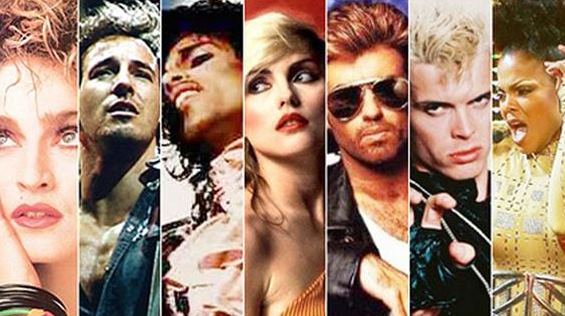Another Sunday morning means it’s time for another selection of six tunes that don’t reflect any overarching theme. Pretty much anything is fair game as long as I like it. In general, I also aim to make these posts a bit eclectic. This installment includes beautiful new age style harp music (a first!), soulful blues, country rock, pop, pop rock and edgy garage rock.
Andreas Vollenweider/Behind the Gardens, Behind the Wall, Under the Tree…
Andreas Vollenweider is a harpist from Zurich, Switzerland. His instrument is no ordinary harp but an electro-acoustic harp he created. A New York Times article from October 1984 characterized his music as “swirling atmospheric”, evoking “nature, magic and fairy tales.” This story appeared ahead of Vollenweider’s U.S. tour debut at the Beacon Theatre in New York City in October of the same year. According to Wikipedia, he was introduced by Carly Simon who had come across his music the previous year. Vollenweider ended up collaborating with Simon 10 years later on his first album to include vocals. He also has worked with Luciano Pavarotti, Bryan Adams and Bobby McFerrin, among others. Behind the Gardens, Behind the Wall, Under the Tree… is the title track of Vollenweider’s second studio album from 1981. To date, he has released 13 additional albums. Until the other day when I randomly remembered his name, I had completely forgotten about Vollenweider and his beautiful and relaxing music. It’s perfect to kick off a Sunday morning.
Chicken Shack/I’d Rather Go Blind
My dear longtime friend and music connoisseur from Germany pointed me to this beautiful song recently. Coincidentally, around the same time, Music Enthusiast mentioned the band Chicken Shack in an installment of his previous four-part series about Fleetwood Mac’s middle period. So what’s the connection between Chicken Shack and the Mac you might ask? Christine Perfect (later Christine McVie) who sang lead and played keyboards in Chicken Shack before recording her eponymous solo album Christine Perfect and joining Fleetwood Mac in late 1970. Chicken Shack released I’d Rather Go Blind as a single in 1969, scoring a no. 14 on the British charts. Written by Ellington Jordan, the tune was first recorded by Etta James in 1967 and appeared on her seventh studio album Tell Mama from February 1968. Perfect’s vocals on Chicken Shack’s cover are – well – just perfect! BTW, Chicken Shack are still around, with the current lineup including founding member Stan Webb (guitar, vocals).
Blue Rodeo/Hasn’t Hit Me Yet
Canadian country rock band Blue Rodeo were founded in 1984 in Toronto. They were formed by high school friends Jim Cuddy (vocals, guitar) and Greg Keelor (vocals, guitar), who had played together in various bands before, and Bob Wiseman (keyboards). Cleave Anderson (drums) and Bazil Donovan (bass) completed the band’s initial lineup. After gaining a local following in Toronto and signing with Canadian independent record label Risque Disque, the group released their debut album Outskirts in March 1987. They have since released 14 additional studio albums, the most recent of which, 1000 Arms, came out in October 2016. Blue Rodeo have enjoyed significant success in Canada. Hasn’t Hit Me Yet was co-written by Keelor and Cuddy who together with Donovan are part of Blue Rodeo’s current lineup. The tune is included on the band’s fifth studio album Five Days in July from October 1993, their best-selling record in Canada to date.
Bruce Hornsby & The Range/The Way It Is
The debut album by American singer-songwriter and pianist Bruce Hornsby with his backing band The Range quickly became one of my favorites when it came out in September 1986. After I hadn’t touched it in many years, I listened to it again about a week ago – turns out I still like it. Hornsby went on to record two additional albums with The Range. His fourth studio album Harbor Lights from April 1993 was the first solely credited to him. Four additional solo albums and four albums with his touring band The Noisemakers have since come out. Hornsby also was a touring member of the Grateful Dead in the early ’90s and has collaborated with numerous other artists. After his first two albums with The Range, Hornsby had dropped off my radar screen. Here’s the title track of his debut. Both the album and the tune enjoyed major international chart success. Not hard to understand way – it’s pretty catchy pop.
Rainbirds/Blueprint
For some reason, the above Chicken Shack tune trigged my memory of German pop rock band Rainbirds. Other than the fact that both tunes feature female vocalists, they really don’t have anything in common – funny how the brain sometimes works! The group around singer-songwriter Katharina Franck, which was formed in Berlin in 1986 and named after a Tom Waits instrumental, enjoyed significant success in Germany with their first two albums. After the band dissolved in 1999 and Franck pursued a solo career, Franck reformed the group in 2013 with a new lineup. Another album appeared the following year. While Rainbirds haven’t released new music since, the group still appears to exist. Blueprint, co-written by Franck (guitar, vocals) and fellow band members Michael Beckmann (bass) and Wolfgang Glum (drums), is from Rainbirds’ eponymous debut album released in January 1987.
The Kinks/All Day and All of the Night
I felt this Sunday Six needed a dose of real rock. The Kinks and All Day and All of the Night looked like a great choice. I love the raw sound, which is very much reminiscent of You Really Got Me, the band’s third single from August 1964 and their first no. 1 in the UK. Written by Ray Davies, All Day and All of the Night came out in October of the same year. It almost matched the success of You Really Got Me, climbing to no. 2 on the British charts. In the U.S., both tunes peaked at no. 7 on the Billboard Hot 100. Oh, get ’em hard!
Sources: Wikipedia; The New York Times; YouTube



